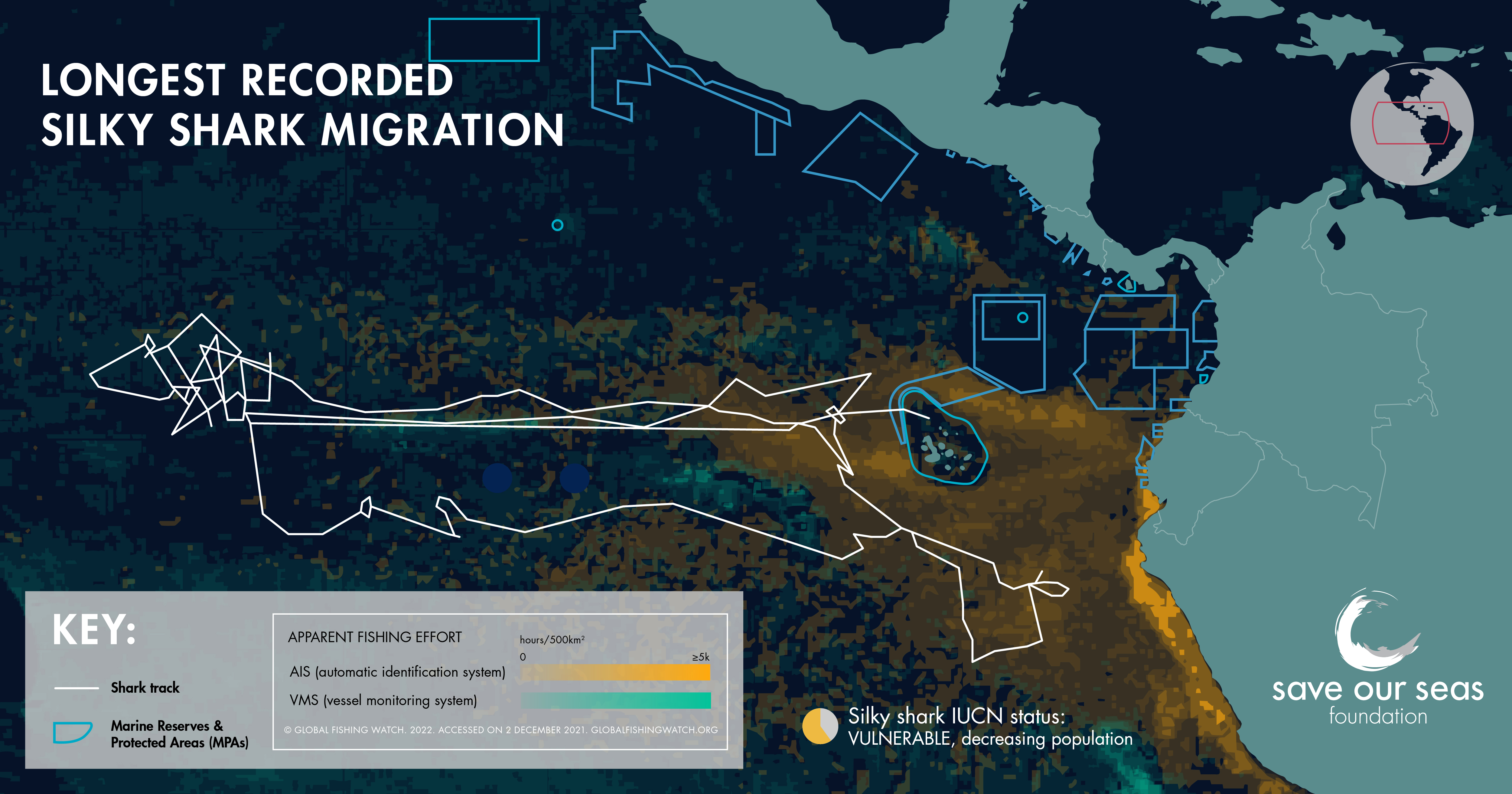Animal migrations are some of the most spectacular sights the natural world has to offer, from incredible wildebeest moving across Africa to the incredible solo journeys undertaken by bird species across planet Earth. Now, a silky shark has entered the record books with a record-breaking migration that helps highlight the vulnerability of this species.
Silky sharks (Carcharhinus falciformis) are a widespread species found across many of the world’s oceans. They tend to be found in waters near the edges of continental shelves. They typically hunt tuna as well as squid, crabs, and porcupine fish, write the Shark Research Institute.
“I had a mixed gut feeling about the migratory nature of silkies from the Galápagos Marine Reserve. While previous studies on pelagic sharks had revealed that they can travel for thousands of kilometres, our previous research on tiger sharks in the Galápagos had shown that they like to stay close to home due to the great abundance of food within the reserve. Since we always encounter silky sharks behind the boat during field work at Darwin and Wolf islands, I thought they might also like to stay close to home … only to be proved wrong big time!” said Dr Pelayo Salinas de León, lead author of the study and co-Principal Investigator of the shark ecology project at the Charles Darwin Foundation, in a statement.
Scientists researching silky sharks fitted an adult female (nicknamed Genie) with a satellite transmitter near Wolf Island to the north of the Galapagos Marine Reserve in July 2021. What followed was an epic journey of more than 27,666 kilometers (17,190 miles) over 546 days, breaking the record for the longest recorded migration of a silky shark by nearly six times.
The mighty voyage undertaken by Genie is the equivalent of crossing the US from the east to west coast four times. At the furthest point, Genie was 4,755 kilometers (2,954 miles) away from the point she was tagged in.

This graphic shows the likely locations of Genie during her mammoth migration route.
Image Credit: Save Our Seas Foundation
“Understanding the migratory pathways of silky and other threatened pelagic sharks is crucial for developing effective management strategies to revert ongoing global population declines. Sharks have been roaming the world’s oceans for hundreds of millions of years and the map boundaries we humans have established on paper mean nothing to them,” said Dr Salinas de León in a second statement.
Silky sharks are classed as vulnerable by the IUCN, which also explains that the silky shark is the second most caught species of shark globally. They frequently become tangled in fish aggregating devices and are often caught as bycatch as well as being caught intentionally for their fins. Silky sharks are vulnerable to overfishing because they take a long time to mature and grow slowly.
“Their long migrations through heavily fished international waters expose them to significant risks, highlighting the need for a coordinated global response to ensure the survival of this highly threatened group of species,” continued Dr Salinas de León.
Genie was thought to have swum an average of 50.67 kilometers (31 miles) per day. The data represents the longest recorded migration both in duration and in distance traveled. She also spent nearly all her time within international waters, not inside the protected safer waters surrounding the Galapagos Islands.
“This finding is a call to action for all stakeholders involved in marine conservation and fisheries management to work together to protect these iconic species and the oceanic ecosystems they inhabit,” added co-author Dr Mahmood Shivji of the Save Our Seas Foundation Shark Research Center and Guy Harvey Research Institute.
The paper is published in the Journal of Fish Biology.
Source Link: Silky Shark Swims Record-Breaking Migration Route Of Over 27,000 Kilometers